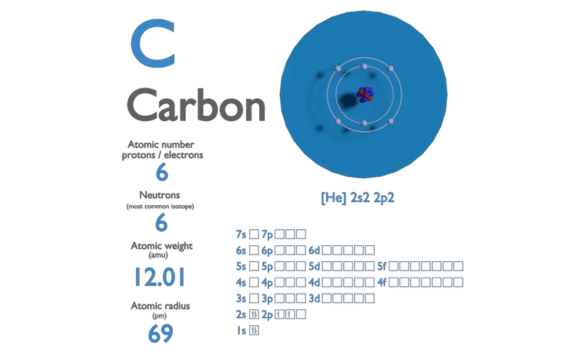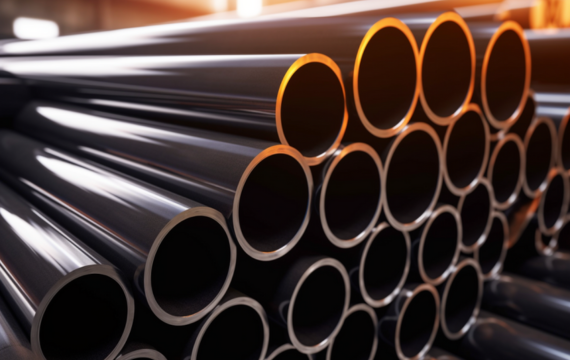Carbon is a popular chemical element that form part of many alloys. Although the material has many features that are worth evaluating, one of the most critical aspects to analyze is the carbon density.
In this guide, we are going to explore some fundamental facts about density of carbon. Of course, we shall also explore the density of its allotropes and common alloys.
Let’s dive right in.

Densities of Allotropes of Carbon
Analyzing the density of carbon can be a little confusing. This is due to the many allotropes available.
Allotropes refers to a state where a chemical element exist in more than one form. The variation depends on the atom’s arrangement and bonding structure.
Here is a table showing the allotropes of carbon and their respective densities:
| Allotrope of Carbon | Density (g/cm³) |
| Graphite | 2.10 |
| Diamond | 3.51 |
| Fullerene | 1.71 |
| Carbon Nanotubes | 1.35 |
| Graphene | 2.31 |
| Carbophene | 1.42 |
| Buckminsterfullerene | 1.70 |
| Amorphous Carbon | 1.90 |
| Lonsdaleite | 3.41 |
- Graphite: it is carbon’s pure form made up of two layers of carbon atoms. Graphite has a metallic lustre which helps in the conduction of electricity and heat. It has a density of 2.10 g/cm³.
- Diamond: it comprises of several carbons linked together in a tetrahedral shape. Diamond is very hard and has a high melting point. Diamond has a density of 3.51 g/cm³.
- Fullerenes: they resemble a sphere and can dissolve in organic solvents. Its density is 1.71 g/cm³.
- Carbon Nanotubes: they have great tensile strength and thermal conductivity. Carbon nanotubes have a density of 1.35 g/cm³.
- Graphene: it has good thermal, physical, and electrical properties. Its density is 2.31 g/cm³.
- Carbophene: it is a covalent organic framework that has 2 dimensions. Carbophene is made up of 4 and 6 carbon rings organized together in a ratio of 1:1. Its density is 1.42 g/cm³.
- Buckminsterfullerene: it resembles a cage shape and has good electrical conduction properties. Its density is 1.70 g/cm³.
- Amorphous Carbon: it is a type of carbon that lacks a crystal structure for example coal, carbon black, and soot. Amorphous carbon has a density of 1.90 g/cm³.
- Lonsdaleite: it is also referred to as hexagonal diamond. It can be produced by a polymer using thermal decomposition. Lonsdaleite has the same density as diamond at 3.51 g/cm³.
Density of Carbon Alloys
Apart from allotropes, there are many alloys of carbon which are worth examining. By evaluating their densities, it will be easier to choose a particular alloy for a specific applications.
For easier comparison, let’s summarize their densities in the table below:
| Carbon Alloy | Density (g/cm3) |
| Carbon steel | 7.8 to 8.1 |
| Low carbon steel | 7.8 to 8.1 |
| Medium carbon steel | 7.8 to 8.1 |
| High carbon steel | 7.8 to 8.1 |
As you can see, the density remains within the same range. However, it is critical to note that these values are higher that carbon allotropedensities.

Factors Affecting the Density of Carbon
Some of the factors which affect the density of carbon include:
- Intrinsic properties of carbon – Like other elements, atomic mass and lattice structure affect carbon density. Of course, covalent bond in the carbon is also a critical aspect affecting density of carbon.
- Manufacturing Method: the method of manufacturing carbon impacts the density of the final carbon. When high amounts of pressure are used in the manufacturing process, they will result in high density and vice versa.
- Types of Fiber: there are different types of carbon fibers. Those of high quality make high-density carbon, low-quality fibers on the other hand result in low-density carbon. In most cases, the density of carbon fiber varies between 1.75 and 1.93 g/cm3.
- Types of Resins: the type of resin incorporated during production impacts the final density of carbon.
Apart from these
Measurement Methods of Density of Carbon
Some of the methods which are used to measure the density of carbon include:
- Ultrasonic Measurement
This method entails passing ultrasonic waves through a sample of carbon and measuring the speed of sound. It is suitable for measuring the density of carbon as it does not require destruction of the sample.
- Visual spark Analysis
It is a more antique technology that is used in calculating the density of carbon. It involves grinding the carbon using high speed and then analyzing the sparks that are produced.
- Infrared Absorption
In infrared absorption, the density of carbon is determined by burning the sample in oxygen. This process is time-consuming but produces accurate results.
- XRF Analysis
X-ray Fluorescence Spectroscopy (XRF) is a method that is non-invasive in measuring the density of carbon. The carbon sample absorbs the radiation which is created by the X-ray to produce accurate results.
- OES Sorting
Optical Emission Spectroscopy (OES) is conducted by evaporating a sample of carbon using electricity. It takes about 30 seconds to determine the density of carbon. This method may be subject to skewed results from being contaminated by other elements on the surface.
FAQ
1. How Dense is Pure Carbon?
On average, the density of pure carbon is 2.2 g.cm-3. However, it is critical to note that carbon exist in many forms naturally. Therefore, you may see many variations when it comes to the value of pure carbon density.
2. Is Density and Atomic Weight of Pure Carbon the same?
No.
The density is 2.2 g.cm-3. On the other hand, carbon’s atomic weight is 12.011
3. Does Carbon has Low or High Density?
Well the density is neither high nor low. Remember, carbon has a density of 2.26 g/cc. This is quite higher compared to lithium with a density of 0.534 g/cc. On the other hand, carbon density is quite low when you compare it to density of chromium which is 7.19 g/cc.
4. What is the Density of Carbon-12?
The density is about 2×10^17 kg/m³.
5. What is the Density of Carbon-14?
On average, the density is 2.2 g/cm3.
6. Which Carbon has the Highest Density?
Among the carbon allotropes, diamond has the highest density of 3.51 g/cm3.
7. How do Calculate Carbon Density?
You can use the equation for calculating density which is Mass/Volume. Therefore, you must get the mass for specific carbon allotrope and volume. The measurement units can be kg/m3, g/cm3 or any other unit that is relevant to your measurement.
Conclusion
As you can see, the density of carbon material vary depending on the type of allotropy. Usually this is due to the variations in atoms arrangement in the chemical element. But more importantly, alloying carbon may result in a low or high density.
Related resources:
Density of Galvanized Steel – Source: KDM
Density of Tungsten – Source: KDM
Silicone Density – Source: KDM
Titanium Density – Source: KDM
Density of Stainless Steel – Source: KDM
Density of Aluminum – Source: KDM




